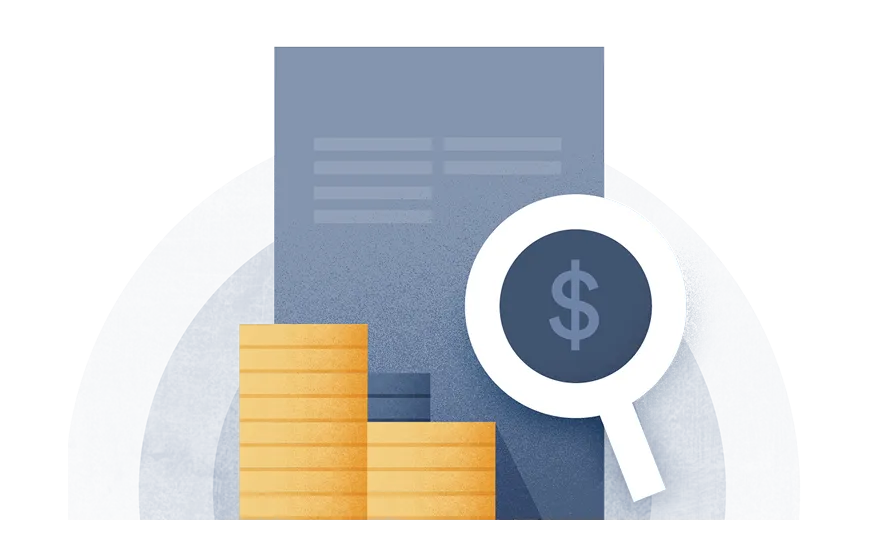Home equity lines of credit (HELOCs) aren’t a common way for homeowners to pay off their mortgage, but as any smart person knows, it sometimes pays to think outside of the box. The idea isn’t without merit, either. A HELOC comes with added perks over a typical home refinance, like the ability to make lower interest-only payments for a bit, or to borrow additional funds if you need.
In some cases, the benefits outweigh the downsides — and there are real risks to consider first. We’ll cover the ins and outs of using a HELOC to pay off your mortgage in this article.
The pros and cons of using a HELOC to pay off your mortgage
We’ll assume you’re already familiar with the basics of how a HELOC works, since these home debts come with their own set of pros and cons.
When it comes to using a HELOC to pay off your mortgage, however, you’re adding an additional layer of considerations into the mix. Here are some of the benefits and disadvantages of using this strategy:
Pros
- Access to flexible credit: You can borrow additional cash as needed, provided that you don’t use your entire HELOC credit limit to pay off your mortgage. Either way, you can refresh access to your credit line by paying down your balance during the draw phase.
- Potentially low interest rates: HELOCs offer significantly lower rates than credit cards and may even be lower than your primary mortgage in some cases, such as if rates have decreased over time or if your credit has improved.
- Interest-only payment option: You’ll only need to make interest-only monthly payments while you’re in the draw period, which typically lasts five to 10 years. It’s a handy option to deal with short-term cashflow issues, but it’s often best to pay more if you can.
Cons
- High fee exposure: You’ll pay closing costs ranging from 2% to 5% just to establish your HELOC. After that, HELOCs may charge annual fees or draw fees each time you access your credit line. Your mortgage may also have prepayment penalties.
- Highly vulnerable to rate rises: HELOCs charge variable interest rates that can make your monthly payments unaffordable if rates go up, particularly if you maintain a large open balance against your credit line.
- Large amount of equity required: If your lender sets a combined loan-to-value ratio of 80%, as is typical, you’d need at least 60% equity in your home to use this strategy. Your home equity would then be split as follows: 20% to you, 40% to your HELOC, which is enough to pay off a mortgage worth 40% of your home’s value.
- No tax deduction for prior home debts: Homeowners working on renovations often prefer HELOCs because the interest is tax-deductible when you use it to upgrade your home. You don’t get that benefit if you use a HELOC to pay off a mortgage, however.
- Complicated and uncertain debt structure: The dual draw-repayment phases in a HELOC require a high degree of financial acumen to avoid debt traps when rates change and repayment begins. If you can’t make payments, you could lose your home.
- Potentially large long-term borrowing costs: Initial monthly payments on a HELOC may be lower since you’re only required to pay interest. If you do this for very long, though, you could spend far more in interest over time than your original loan term.

When using a HELOC to pay off your mortgage makes sense
Most financial experts don’t recommend HELOCs as a primary option for paying off your mortgage. In some cases, though, it might make sense. Here are some signs that it might be right for you:
- You fully understand how HELOCs work.
- You have plans for how you’ll manage HELOC repayment.
- You’ve explored other options and ruled them out in favor of HELOCs.
- You want access to a line of credit that you can borrow against as needed.
- You’ve run the numbers to see how expensive your HELOC payments can be.
- You’re comfortable using your home as collateral and understand your foreclosure risk.
How to successfully use a HELOC to pay off a mortgage
In order to make this strategy work, it’s a good idea to plan a few extra steps first. Here’s what to consider:
- Check your current mortgage: Review your current statement to figure out how much you still owe. Ask your lender if there are any prepayment penalties.
- Check your HELOC qualifications: Get a copy of your credit report and look for errors you might need to fix. Check your credit score, too. Try to get a rough estimate of your home value, as well, so you know how much home equity you have.
- Check your HELOC options: Get prequalified with different lenders to see how much your HELOC might cost you in terms of rates and fees. Pay particular attention to the boundaries of the variable rates, since this determines your maximum potential cost.
- Check your budget: Plug the HELOC estimates you received into a payment calculator to see if you’d be able to afford the payments, both during the draw period and the repayment period. See how much your payments would be affected if rates increased to the maximum limit mentioned in the financing details, too.
- Make a plan: HELOCS offer a lot of flexibility when it comes to how much you borrow and repay. That flexibility can make it easy to end up in a situation where payments are no longer affordable, though, especially if rates rise and when you enter the repayment period. It’s best to have a plan in place to manage repayment, such as by making extra payments each month to pay off your HELOC faster.
- Apply for the HELOC: If you’ve made a careful assessment and decided that a HELOC is your best option, go ahead and proceed with a full application. Keep in mind that it can take several weeks to complete the underwriting on your HELOC.
- Pay off your mortgage: Once you receive the HELOC funds, ask your mortgage lender for a final loan payoff estimate. These statements are generally only valid for a short period of time. Now that you have the funds securely in your hand, you’re ready to pay them off as soon as you know how much, exactly, to send in to your mortgage lender.
Alternative ways to accelerate paying off your mortgage
If paying off your home sooner is your goal, it’s a good idea to consider your other options before settling on a HELOC. It’s possible that another financing option might work out better for you, or — at the very least — you can gain additional certainty that a HELOC is right for your needs.
Bi-weekly payments
Many lenders offer the option of paying on a bi-weekly schedule instead of monthly. If you get paid every two weeks, this can make it easier to fit your mortgage payments into your budget. Additionally, it provides another benefit for everyone: due to the calendar's design, you’ll make one extra full month’s worth of payments every year. That can help you repay your home more quickly.
Home equity loan
A home equity loan is another type of “second mortgage,” just like a HELOC, but it offers a lump sum of funds. Homeowners who use the entirety of that cash to pay off their mortgage are essentially taking out a de facto refinance loan, although rates are typically higher. If lenders are willing to offer you lower rates and fees on a home equity loan, though, it may be worth it.
Alternatively, if you take out a larger loan, you could use some of the funds to pay off your mortgage and use the remainder for other things, like paying down credit card debt.
Home equity investment
Home equity investments (HEIs) aren’t a debt, exactly, although they do offer access to a lump sum of money that you can use to pay off your mortgage. An HEI typically has easier-to-meet qualifications and doesn’t require any monthly payments. The funds are typically repaid as a single payment in 30 years, along with a share of your home’s future appreciation (that's change in value, not total home value).
Refinance
If your current mortgage isn’t working out for you, another option is to simply refinance it with another mortgage that does. A rate-and-term refi can help you get a lower interest rate and/or a shorter term length that can make it easier to repay your home faster, if you qualify. If you need to borrow money, a cash-out refi can help you tap into your home equity while replacing your mortgage at the same time.
Frequently asked questions
What is the monthly payment on a $50,000 home equity line of credit?
If you draw $50,000 from a HELOC and make interest-only payments for the next 10 years, your monthly payments would be $365. Your monthly payments would jump up to $442 once you enter a 20-year repayment period. This HELOC payment calculation uses a steady interest rate of 8.75%, although your exact rate — and thus, your monthly payment — will fluctuate over time.
How can I pay off my 30-year mortgage in 10 years?
You’ll need to make extra payments to pay off your mortgage at an accelerated rate. If you’re repaying a typical mortgage (30 years at 6.84% interest) on a median-priced home ($401,800, with a 20% down payment), you would owe $2,100 per month. In order to repay your home in 10 years, however, you’d need to send in an extra $1,600 with each payment.
Can you release equity to pay off your mortgage?
Yes, you can tap into your home equity with other financing options to pay off your mortgage, provided you have sufficient equity in your home and can meet the lender's other requirements. Home equity loans, cash-out refinances, rate-and-term refinances, home equity investments, and reverse mortgages can all be used to pay off your mortgage.

Final thoughts
Paying off your mortgage with a HELOC probably isn’t a good fit for the average homeowner. If you’ve given it a lot of thought, run the numbers to check your borrowing costs in each scenario, and have a secure plan to handle repayment, however, it can be a viable option if you want to maintain access to a line of credit.
No income? No problem. Get a home equity solution that works for more people.
Prequalify in 60 seconds with no need for perfect credit.
Show me my offer
Frequently asked questions

Thank you for subscribing!
.webp)















